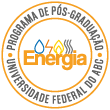Banca de DEFESA: EDUARDO VICENTE VALDÉS CAMBERO
Uma banca de DEFESA de DOUTORADO foi cadastrada pelo programa.DISCENTE : EDUARDO VICENTE VALDÉS CAMBERO
DATA : 17/04/2020
HORA: 09:00
LOCAL: Auditório, 8º andar, Bloco B, Campus SA da Fundação Universidade Federal do ABC, localizada na Avenida dos Estados, 5001, Santa Terezinha, Santo André, SP
TÍTULO:
COPLANAR PATCH ANTENNA ARRAY INTEGRATED WITH PHOTOVOLTAIC CELLS FOR HYBRID ENERGY HARVESTING
PÁGINAS: 95
GRANDE ÁREA: Engenharias
ÁREA: Engenharia Elétrica
SUBÁREA: Sistemas Elétricos de Potência
ESPECIALIDADE: Conversão e Retificação da Energia Elétrica
RESUMO:
The rise of Smart Grids, Wireless Sensors Networks, and Internet of Things has produced a growing demand for alternative sources of power. Currently, batteries dominate the energy storage market for those technologies, but they are perishable sources characterized by the need for replacement at relatively short periods and the pollution of its waste. In order to find new power sources, many studies of harvesting mechanisms associated with thermal, solar, vibration, or electromagnetic waves have been carried out. The production of electric current using photovoltaic cells is a technique studied and developed more than two decades ago. However, it is still highly sensitive to low light conditions or at night time. Under these conditions, the energy extracted from electromagnetic waves can assume the demand for power. This technique is known as radiofrequency harvesting, and it uses rectennas to capture the energy of the environment. Radiofrequency harvesting faces problems like the low values of power density available in the environment, but it does not depend on the levels of light to produce energy. The idea of hybrid systems based on the alternate use of two energy sources guarantees the power every time the load needs. The research presented here aims to develop a hybrid solar and electromagnetic harvesting structure to support very low-power devices, mainly for indoors. This work presents the design, simulation, analysis, and prototyping of two coplanar patch antenna configurations with resonant frequency at 2.45 GHz integrated with solar cells. The consequences of the integration process are evaluated for both components: antennas and solar cells. Then, the principal results and conclusions of the work are presented. It was proved that solar cells could be used as radiating elements in antennas without the need to incorporate another type of metallization. However, variations on the area of an optimized solar cell bring as a consequence a considerable decrease of its power conversion efficiency, that depending on the operation conditions could turn unfeasible the use of the solar cell. Also, it is presented a methodology to characterize the interface antenna/rectifier as a function of the S parameters and its influence on the power conversion efficiency of the rectenna.
MEMBROS DA BANCA:
Membro Titular - Examinador(a) Interno ao Programa - 2286312 - JOEL DAVID MELO TRUJILLO
Membro Titular - Examinador(a) Externo ao Programa - 1761107 - RICARDO SUYAMA
Membro Titular - Examinador(a) Externo ao Programa - 1544396 - RODRIGO REINA MUNOZ
Membro Titular - Examinador(a) Externo à Instituição - CRISTIANO AKAMINE - UPM
Presidente - Externo ao Programa - 1762419 - CARLOS EDUARDO CAPOVILLA
Membro Suplente - Examinador(a) Interno ao Programa - 1907748 - ALFEU JOAOZINHO SGUAREZI FILHO
Membro Suplente - Examinador(a) Externo à Instituição - HUMBERTO XAVIER DE ARAUJO - UFT




